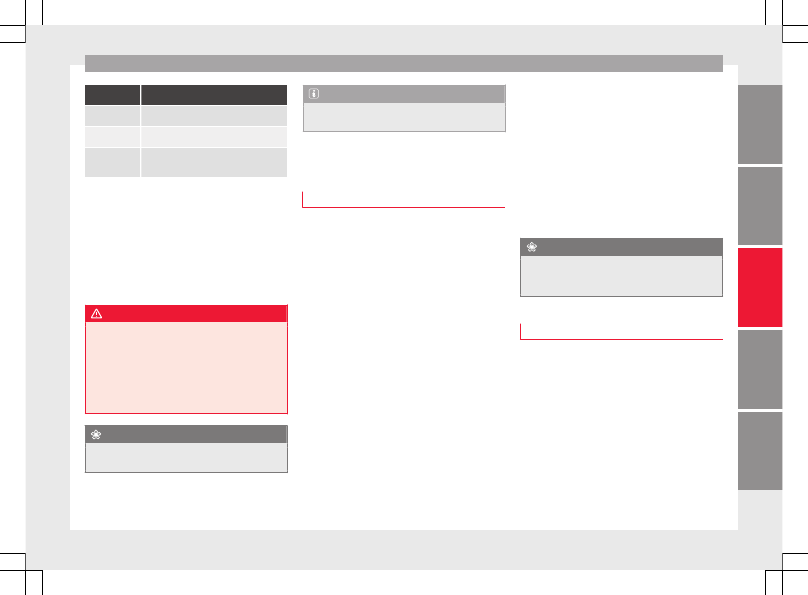Seat Alhambra. Instruction - part 13
-------------------------------------------------------------------------------------------------------------------------------------------------------------

Driving
Display
Meaning
Optimum gear.
Recommendation to change up a gear.
Recommendation to change down a
gear.
Information for “cleaning” the diesel partic-
ulate filter
The exhaust gas system control recognises
when the diesel particulate filter is blocked,
and helps to clean it by recommending a spe-
cific gear for driving. It may therefore be nec-
essary to drive with the engine at an excep-
tionally high speed
›››
WARNING
The recommended gear display is intended as
a guideline only; it should never replace the
driver's attention to driving carefully.
●
Responsibility for selecting the correct gear
for each situation continues to lie with the
driver, for example when overtaking, climb-
ing a hill or towing a trailer.
For the sake of the environment
Selecting the most appropriate gear for the
situation will help you to save fuel.
Note
The recommended gear display is switched
off when the clutch pedal is pressed.
Run-in and economical driving
Running in
Please observe the instructions for running-in
new components.
Running-in the engine
The engine needs to be run-in over the first
1500 km (1000 miles). During its first few
hours of running, the internal friction in the
engine is greater than later on when all the
moving parts have bedded down.
How the vehicle is driven for the first
1500 km (1000 miles) influences the future
engine performance. Throughout the life of
the vehicle, it should be driven at a moderate
speed – especially when the engine is cold –
this will reduce engine wear and increase its
useful life. Never drive at extremely low en-
gine speeds. Always engage a lower gear
when the engine works “irregularly”.
For the
first 1000 km or 600 miles, please note:
●
Do not use full throttle.
●
Do not force the engine above two thirds of
its maximum speed.
●
Do not tow a trailer.
Between 1000 and 1500 kilometres (600 to
1000 miles), gradually increase power until
reaching the maximum speed and high en-
gine speeds.
Running in new tyres and brake pads
●
Replacement of wheel rims and new tyres
●
Notes on the brakes
›››
For the sake of the environment
If the engine is run in gently, the life of the
engine will be increased and the engine oil
consumption reduced.
Environmental compatibility
Environmental protection is a top priority in
the design, choice of materials and manufac-
ture of your new SEAT.
Constructive measures to encourage recy-
cling
●
Joints and connections designed for easy
dismantling
●
Modular construction to facilitate disman-
tling
●
Increased use of single-grade materials.
»
197